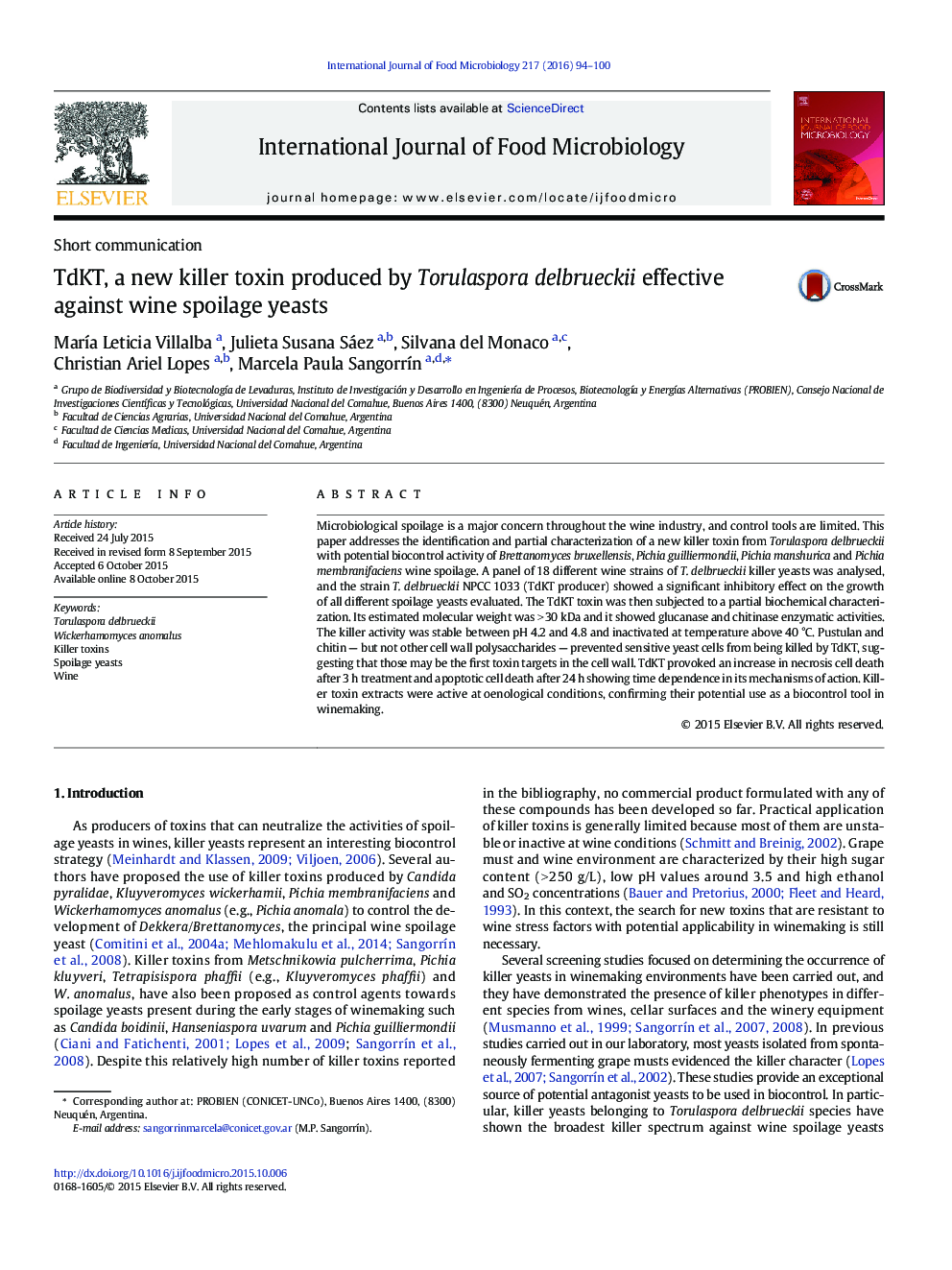| کد مقاله | کد نشریه | سال انتشار | مقاله انگلیسی | نسخه تمام متن |
|---|---|---|---|---|
| 4366401 | 1616566 | 2016 | 7 صفحه PDF | دانلود رایگان |

• TdKT has shown potential to control broadest spectrum wine spoilage yeasts.
• TdKT induces ultrastructural modifications in the cell wall of the sensitive strains.
• TdKT showed glucanase and chitinase enzymatic activities.
• Apoptotic and necrotic cell deaths were observed after toxin treatment.
• TdKT was described in this work for the first time.
Microbiological spoilage is a major concern throughout the wine industry, and control tools are limited. This paper addresses the identification and partial characterization of a new killer toxin from Torulaspora delbrueckii with potential biocontrol activity of Brettanomyces bruxellensis, Pichia guilliermondii, Pichia manshurica and Pichia membranifaciens wine spoilage. A panel of 18 different wine strains of T. delbrueckii killer yeasts was analysed, and the strain T. delbrueckii NPCC 1033 (TdKT producer) showed a significant inhibitory effect on the growth of all different spoilage yeasts evaluated. The TdKT toxin was then subjected to a partial biochemical characterization. Its estimated molecular weight was > 30 kDa and it showed glucanase and chitinase enzymatic activities. The killer activity was stable between pH 4.2 and 4.8 and inactivated at temperature above 40 °C. Pustulan and chitin — but not other cell wall polysaccharides — prevented sensitive yeast cells from being killed by TdKT, suggesting that those may be the first toxin targets in the cell wall. TdKT provoked an increase in necrosis cell death after 3 h treatment and apoptotic cell death after 24 h showing time dependence in its mechanisms of action. Killer toxin extracts were active at oenological conditions, confirming their potential use as a biocontrol tool in winemaking.
Journal: International Journal of Food Microbiology - Volume 217, 18 January 2016, Pages 94–100